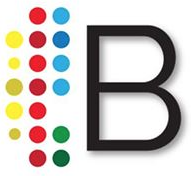The recent wave of tariffs has sent ripples across industries, affecting supply chains, pricing strategies, and overall market stability. With new tariffs imposed on goods from Canada, Mexico, and China, companies across manufacturing, retail, and technology sectors are scrambling to adjust their operations, mitigate cost increases, and maintain competitive advantages.
The Economic Impact of Tariffs
Recent news analysis highlights that these tariffs are creating a complex economic environment. Federal Reserve Governor Christopher Waller has warned that the newly imposed 25% tariffs will be significantly harder for businesses to absorb, particularly in a more volatile economic climate compared to past trade wars. The International Monetary Fund (IMF) also projects that if these tariffs are sustained, they will negatively impact the economies of Canada and Mexico, key trading partners of the U.S.
While some companies have been able to adjust their supply chains and pricing strategies, others are feeling immediate pressure.
Sector-by-Sector Breakdown: Who’s Feeling the Heat?
1️⃣ Technology & Manufacturing: Jobs, Costs, and Supply Chain Risks
Hewlett Packard Enterprise (HPE) has announced 2,500 job cuts, citing tariffs as a major factor behind its cost-reduction plan. The company anticipates pricing adjustments to offset tariff-related expenses.
Boeing has voiced concerns that new tariffs could lead to higher costs and supply disruptions, adding uncertainty to an already strained aerospace supply chain.
Best Buy has warned that tariffs on electronics components will likely increase consumer prices, as vendors pass along higher costs.
2️⃣ Automotive: Temporary Relief, Long-Term Uncertainty
The Trump administration granted a one-month reprieve for certain auto tariffs after lobbying from Ford, GM, and Stellantis. However, this does not eliminate long-term risks, with some estimates suggesting tariffs could add $3,000 to $10,000 to vehicle costs.
Volvo Car AB noted that trade tariffs, alongside regulatory changes, could lead to major disruptions in 2025.
Worthington Steel expressed concerns about headwinds in the automotive sector, though some recovery signals have emerged.
3️⃣ Retail & Consumer Goods: Price Adjustments and Strategic Shifts
Kroger is actively reshaping its supply chain to avoid tariff-heavy imports and maintain competitive pricing.
Foot Locker expects a Nike brand reset and new tariffs to weigh on its 2025 sales performance.
Lululemon vs. Canada Goose – Lululemon, which manufactures most of its products in Vietnam and Cambodia, is largely unaffected by tariffs. Canada Goose, however, produces 70% of its goods in Canada, making it highly vulnerable to the new trade policies.
What Industry Leaders Are Saying About Tariffs
A sentiment analysis of recent earnings call discussions suggests a mixed outlook on tariffs. While some companies have successfully mitigated the impact through proactive strategies, others are bracing for financial setbacks and disruptions. Here’s what executives from various sectors had to say:
📌 EnerSys – Acknowledged that while it’s impossible to fully mitigate tariffs, they have developed playbooks to adjust their sales and operations strategies in response to policy changes.
📌 Fluence Energy, Inc. – Reported that less than 15% of their backlog is exposed to recently announced tariffs, but a $10 million impact on 2025 gross profit is expected.
📌 GigaCloud Technology Inc. – Stated that their first-party business is less exposed, but third-party sellers will experience some impact from new tariff regulations.
📌 Carrier Global Corporation – Announced that China-related tariffs have already been accounted for in their financial guidance, with most materials sourced domestically, reducing exposure.
📌 Stanley Black & Decker, Inc. – Leveraging experience from past tariff cycles to build resilience into their operations and cost management.
📌 Volvo Car AB – Expressed concern about geopolitical headwinds, indicating that tariffs and regulatory shifts could impact demand and operational planning in 2025.
📌 Worthington Steel, Inc. – Highlighted headwinds in the automotive sector, although signs of recovery are emerging.
📌 Recent News Analysis – Reports indicate that retaliatory tariffs from Canada and Mexico are affecting supply chains and price structures, leading to increased business uncertainty. Additionally, a JPMorgan report suggests that tariffs are leading to price pressures and a front-loading of activity as companies attempt to mitigate future cost increases.
Strategies Companies Are Using to Adapt
Facing increased costs and supply chain disruptions, companies are employing several key strategies:
✔ Diversifying Manufacturing – Businesses are shifting production away from tariff-heavy regions and exploring alternative suppliers. ✔ Reassessing Pricing Models – Many firms are adjusting pricing structures to balance cost absorption and market competitiveness. ✔ Supply Chain Resilience – Companies like Kroger are restructuring logistics to minimize exposure to tariffs. ✔ Lobbying for Policy Changes – Several industries, particularly automotive and retail, are engaging in active discussions with policymakers to seek relief or adjustments.
Looking Ahead: What’s Next for Trade Policy?
The latest trade policies have introduced significant uncertainty, with businesses, investors, and economists closely monitoring potential shifts. Many expect ongoing negotiations and potential exemptions, while others brace for long-term structural changes in trade dynamics.
At Bizologie, we help businesses stay ahead of trade and economic shifts by providing competitive intelligence, market research, and strategic analysis. If your company needs insights on how tariffs and trade policies will affect your industry, let’s connect.
📩 Get in touch to learn more!


